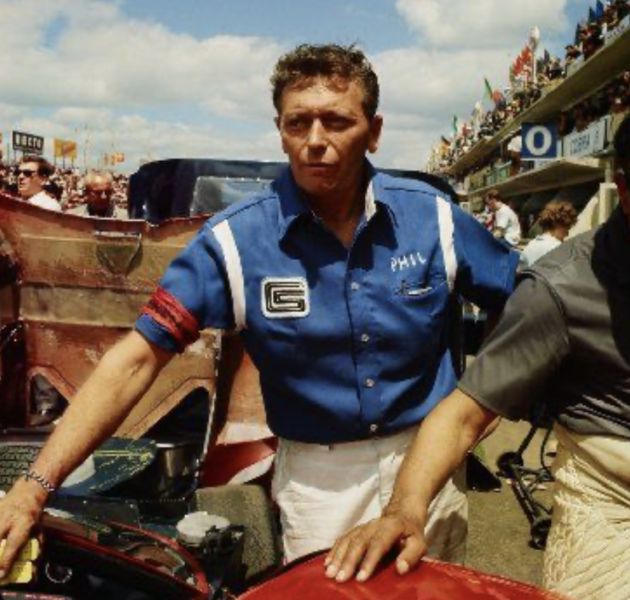
Wherever Rem went, wins and championships followed. The WWII flight engineer was one of the most successful chief engineers in sports car racing history. As chief engineer for Lance Reventlow’s Scarab project in the mid-‘50s, the team won the 1958 SCCA National Championship and built the first American F1 car. As chief engineer at Shelby-American, they captured the 1965 World Manufacturers Championship and built the Ford GTs that became in 1966 and ’67 the first American cars to win Le Mans. Next, Remington helped Holman and Moody win the 1968 DAYTONA 500. Later that year he joined Dan Gurney’s All American Racers, where over the next 40+ years he built Eagles that won more than 50 IndyCar races, multiple Indy 500s and the 1974 national championship, SCCA Trans-Am cars, IMSA GTO champions and a Toyota GTP car so dominant it was blamed for ending the series. Many of today’s standard practices in the industry are things Remington pioneered. Of his longtime friend and colleague, Gurney said Rem was “AAR’s Rock of Gibraltar.”
By John Zimmermann
Phil Remington's seven-decade career as one of auto racing's top craftsmen was filled with success, with victories and championships seeming to follow him wherever he went. His resumé was his reputation, and the serial success he savored made him welcome anywhere he chose to park his toolbox. Those he worked alongside knew him as the man who could get things done.
Upon returning home from service as a flight engineer in World War II, Remington applied his remarkable talents in the employ of famed Los Angeles-based Indycar builders Emil Diedt and Lujie Lesovsky. There he built upon the knowledge he'd gained from a year of prewar engineering studies at UCLA, helping build a Norman Timbs-designed sports car for Bay Area industrialist Sterling Edwards, who then decided he wanted to race it. The resulting car featured "spot brakes" that Remington adapted from a Beach Bonanza airplane and treadless recapped tires, possibly racing's first uses of both disc brakes and slick tires.
Diedt and Lesovsky were also building Scarabs for Lance Reventlow then, and when Jim Travers of Traco Engineering told him he should go work for Lance, Phil wisely heeded the advice. He ultimately guided Reventlow and his Scarab team to the SCCA's 1958 National Championship while also building the first — though less than successful — American F1 car. When Reventlow sold his enterprise to Carroll Shelby, it morphed into Shelby American — Remington characterized his part in the move as "going along with the furniture" — where Rem shepherded Carroll's Cobras to their class win at Le Mans and subsequent 1965 FIA Manufacturers' World Championship. The Ford GTs that finally earned four consecutive overall victories for America in the French 24-hour classic were mainly the result of his handiwork as well — especially the 1967-winning Mk IV.
After leaving Shelby's he played a crucial role in Holman and Moody's NASCAR success with Ford in the late '60s before joining Dan Gurney's All American Racers in 1969. That coincided with the beginning of a period of Eagle domination at Indy — later emulated in IMSA — and he worked at AAR until his death in 2013. All that aside, he considered himself little more than an honest, hard-working guy trying to do his job as best he could.
More than half a century of racecar design evolution passed before his inquisitive eyes and through his masterful hands, beginning with tubeframe chassis and transitioning through steel and aluminum monocoques into honeycomb and carbon fiber. Many of racing's standard engineering practices today are solutions Remington discovered intuitively for problems he encountered along the way.
Carroll Smith and Pete Weismann, like-minded geniuses who like Remington are now sadly gone, learned to appreciate him during their days together on Ford's Le Mans project. Preparation guru Smith thought Rem the best fabricator around, and credited his intuitive empathy with machinery for his magical problem-solving skills. For gearbox-wizard Weismann, Remington was the master craftsman who could give physical form to an engineer's wildest ideas.
Gurney, his employer for more than four decades, perhaps best captured Rem's essence, saying, "If you were marooned on a desert island, and wanted to get off of it, he's who you'd like to have with you!"
John Zimmermann's motorsports journalism career began as managing editor of RACECAR, before becoming founding editor of On Track and RACER — serving as Autoweek's motorsports editor in between. He authored the book 'Dan Gurney's Eagle Racing Cars,' and after a decade at Vintage Racecar is writing a book about Formula 5000.
MSHFA 2022 Inductee Peter Brock
(Scott Hunter)